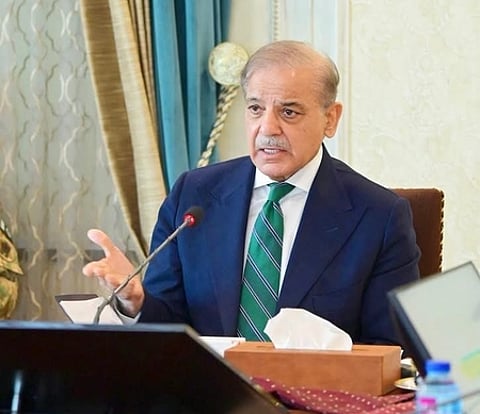Pakistan posts largest drop in default risk among emerging markets — what does it mean for investors?
Report cites 1,100 bps improvement as investor confidence grows amid IMF reforms

Dubai: Pakistan has emerged as the most improved economy among global emerging markets in terms of reducing default risk, according to data from Bloomberg Intelligence, as cited by Khurram Schehzad, Adviser to Pakistan’s Finance Minister.
Bloomberg, the international financial and media giant, reported that Pakistan showed the sharpest decline in default probability, a reflection of renewed investor confidence, macroeconomic stabilisation, structural reforms, and timely engagement with the International Monetary Fund (IMF). Global credit agencies including S&P and Fitch have also upgraded Pakistan’s credit outlook.
According to the report, Pakistan’s CDS-implied default probability dropped from 59 per cent to 47 per cent, representing a massive 1,100 basis point (bps) improvement.
What does it mean?
Default risk: This refers to the likelihood that a country will fail to repay its debt (loans, bonds, etc.) on time.
Biggest drop: Pakistan’s risk of defaulting on its debt has decreased more than any other emerging market recently.
Measured by CDS: Default risk is often measured using Credit Default Swaps (CDS). A drop in CDS rates means investors feel more confident that the country will repay its debt.
Positive sign: A lower default risk suggests better economic stability, improved financial management, or successful negotiations with lenders (e.g., IMF).
Investor confidence: Falling default risk often increases investor confidence, which can lead to more foreign investment.
Possible reasons:
IMF loan disbursements or bailout packages.
Increase in foreign reserves.
Reduction in imports to manage trade balance.
Political stability or reforms.
Improved revenue collection or fiscal discipline.
This is the largest drop among all major emerging markets, outpacing countries like Argentina (-7%), Tunisia (-4%), and Nigeria (-5%). In contrast, default risks rose in economies such as Turkey, Ecuador, Egypt and Gabon.
“This sharp decline signals growing investor confidence in Pakistan’s economic trajectory,” Schehzad said.
“It’s a resounding signal to global investors that Pakistan is not only back on the map — it is advancing with stability, credibility, and reform at its core.”
Combination of factors
The improvement is largely credited to a combination of factors including macroeconomic stabilisation, a robust reform agenda, timely debt repayments, and successful IMF engagement.
The government also highlighted improved ratings from credit agencies like S&P and Fitch as evidence of increasing market credibility.
Speaking to Dawn, government officials reiterated that Pakistan has entered a phase of economic recovery and stabilisation following a period of financial uncertainty. International observers have also noted steady progress in key economic indicators.
Earlier this month, Finance Minister Muhammad Aurangzeb presented the Pakistan Economic Survey 2024–25, projecting that GDP would grow 2.7 per cent in the outgoing fiscal year ending June 2025. The target was revised down from an earlier 3.6 per cent forecast. The IMF expects Pakistan’s GDP to expand 2.6 per cent this fiscal year and 3.6 per cent the next.
In May, a United Nations report also predicted that Pakistan’s economy would experience moderate growth, stabilising after a period of contraction, with GDP projected to rise 2.3 per cent in 2025.
Prime Minister Shehbaz Sharif welcomed the Bloomberg assessment, according to The Express Tribune, saying it validates the government's ongoing efforts.
“The report acknowledges important institutional reforms, the IMF agreement, and timely loan repayments as evidence of improvement,” he said. “Pakistan is among the few countries that showed the most economic progress in the past 12 months.”
He attributed this improvement to the "consistent hard work and dedication" of the government’s economic team and reaffirmed that Pakistan is “moving fast toward a stronger economic future.”
The government has undertaken a series of IMF-advised structural reforms and fiscal policies aimed at strengthening public finances, attracting investment, and ensuring macroeconomic stability.
For the upcoming fiscal year, the government has set an ambitious growth target of 4.2 per cent, while also balancing goals such as maintaining a primary surplus and managing defense spending amid ongoing tensions with India.
Sign up for the Daily Briefing
Get the latest news and updates straight to your inbox



